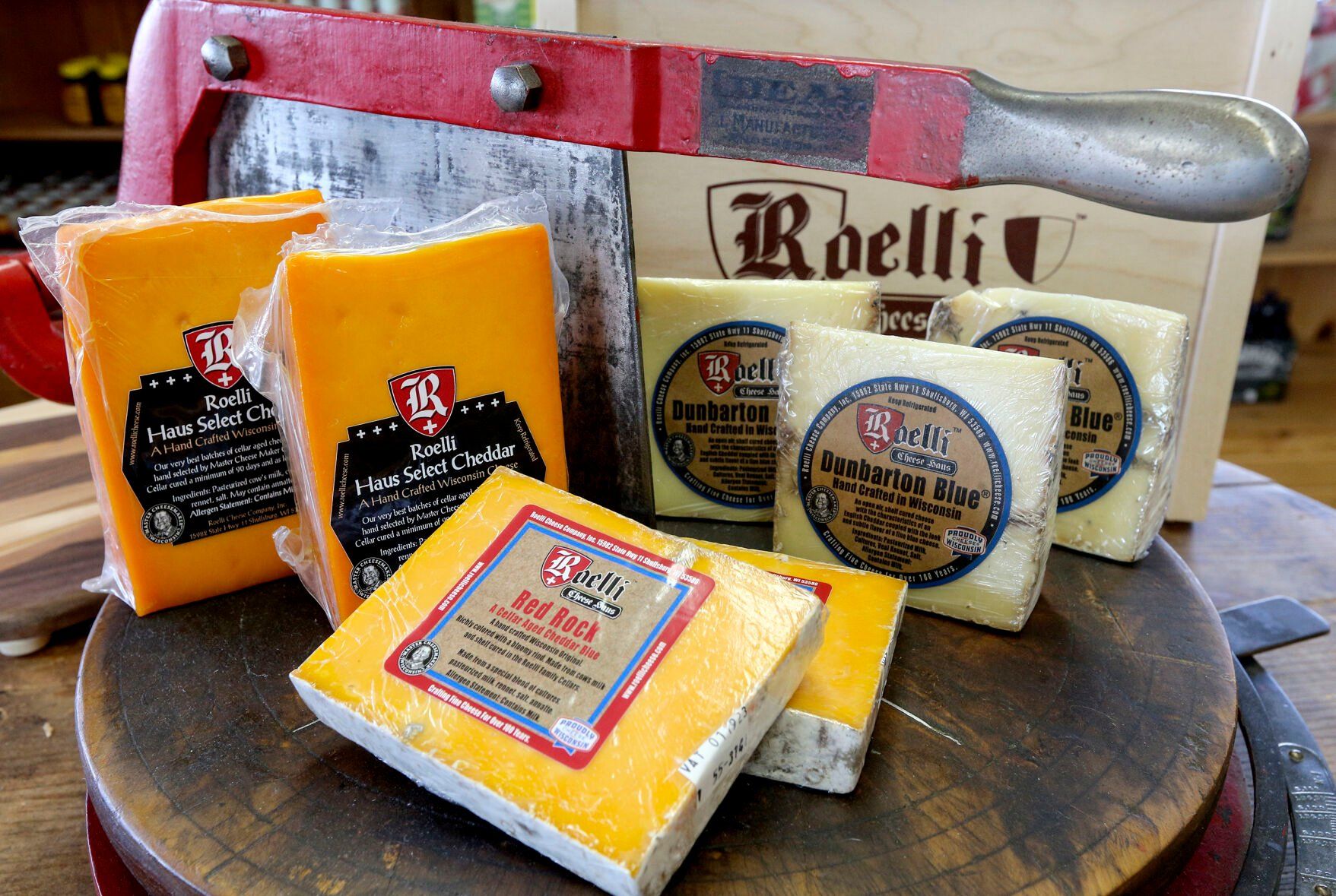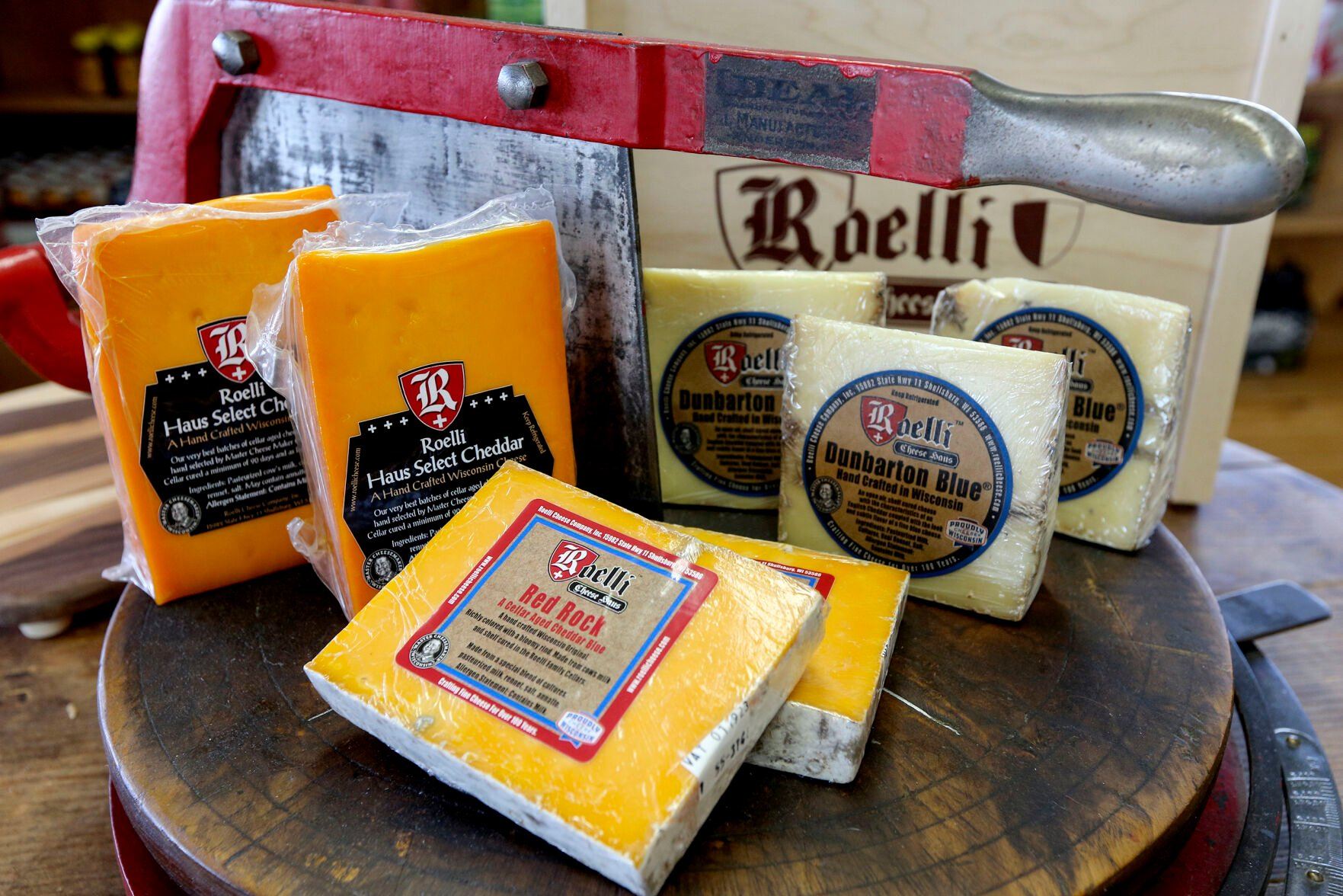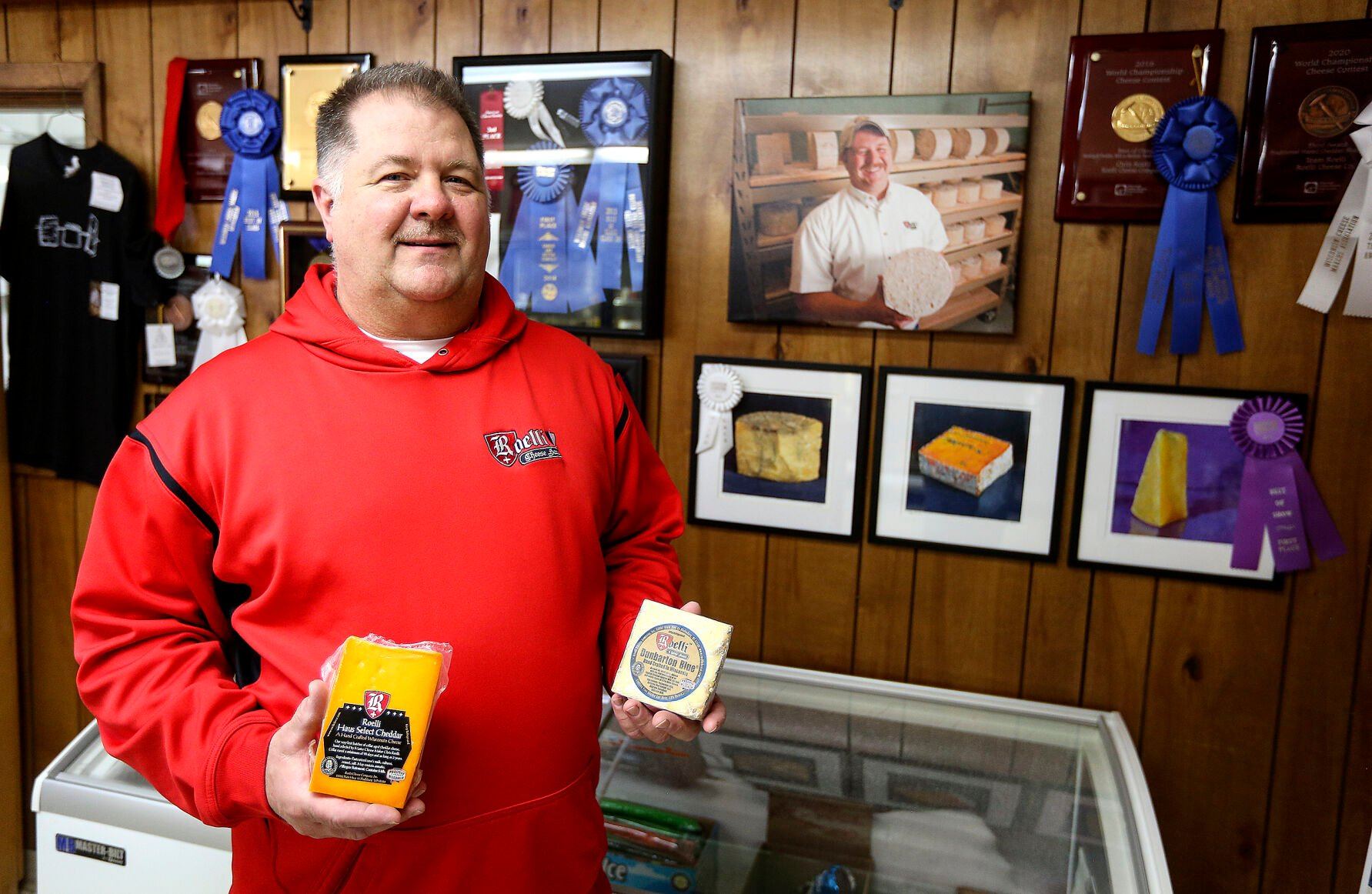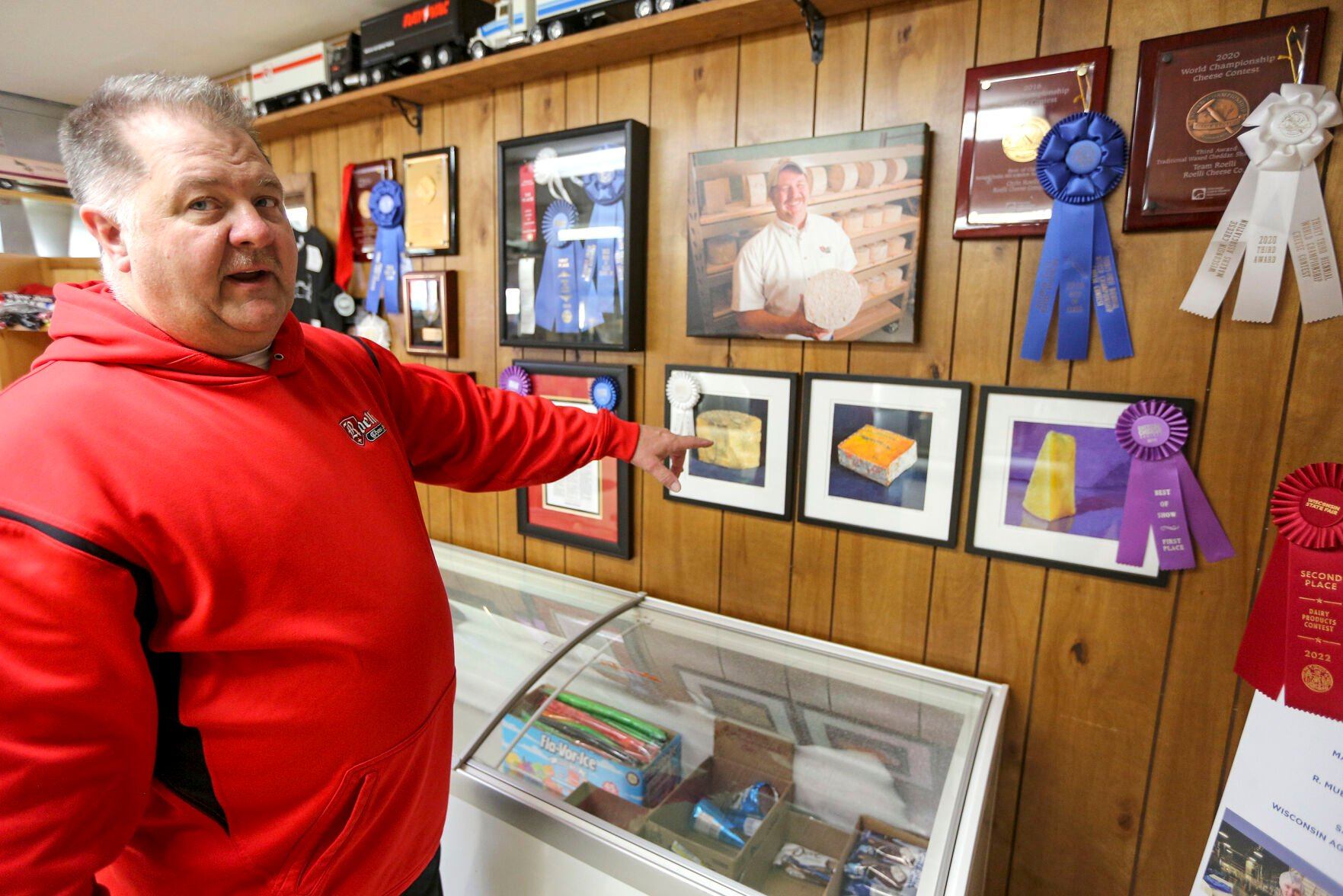SHULLSBURG, Wis. — As a fourth-generation cheesemaker, Chris Roelli can tell a lot about cheese from the very first bite.
But even for less-experienced snackers, Roelli said it doesn’t take an expert to know when you’ve found a high-quality product.
“If you’re tasting something good, you just know it. It’s a gut sense,” said Roelli, Shullsburg, Wis.-based master
cheesemaker and owner of Roelli Cheese Haus. “You can get a really nice brick cheese or a really nice cheddar. It doesn’t have to be fancy. If it tastes good, it serves its purpose.”
But beyond the basic like or dislike factor, there is so much more to be considered about the wide variety of cheeses available in the tri-state area. There’s different textures, ages and colors. Some are sharp, others mild.
While those designations are now practically second nature to a master such as Roelli, he admits they can be a bit overwhelming to the casual cheese consumer.
For those looking to get a handle on one of the tri-state area’s favorite foods, the Telegraph Herald spoke with area cheese aficionados about how to make the most of the wide variety of cheeses area vendors have to offer.
Back to basics
Despite all the different varieties on the market, all cheese starts out with the same ingredients: milk, salt, bacteria and an enzyme. The hundreds of unique cheese flavors, textures and colors are in part a result of the different bacterial microbes used in the process.
“Cheese is actually a living organism,” Roelli said. “There’s bacteria in the product that we introduced the day we make the cheese, … and that’s what generally flavors the cheese.”
Once cheese is made, it then typically is categorized by texture, flavor and age, among other factors.
One of the categories people are most familiar with is the concept of aging cheese, said Elle Fearing, sales and marketing representative for Carr Valley Cheese, which has a location in Fennimore, Wis.
Fearing said the aging process is actually quite simple, and in many instances it just involves the cheese being placed in a cool room for a set amount of time to be checked from time-to-time by cheesemakers. Some cheeses such as cheddars can age up to 20 years or more.
The longer the cheese ages, the stronger and sharper the flavor. Younger cheeses by comparison are milder with softer textures.
“And that’s how you get those really stereotypical flavors,” Fearing said. “So (aged cheese) reminds me of that kind of sour reaction you get when you put some cheese in your mouth and your cheeks kind of pucker a little bit from the strength (of the flavor).”
But not all cheeses age well, Roelli warned. Cheddars, goudas and parmesan are commonly aged cheeses whose flavor profiles develop with time. Cheeses with higher moisture content such as mozzarella and ricotta are better when eaten young.
“In some cases, it has to do with the history of the cheese,” Roelli said. “If you think back to before there was mechanical cooling and automobiles, if you made cheese up in the mountains … and needed to transport it down to the valleys (later in the year), you’d want a cheese that can hold up as it ages.”
Got (goat) milk?
Another factor to consider when purchasing cheese is the kind of milk used in the cheese-making process. While cows’ milk is the most common choice, alternatives such as goat and sheep cheese have risen in popularity in recent years.
The type of milk used to make cheese affects the flavor, color and texture, according to Bryon Taylor, co-owner of Galena River Wine and Cheese in Galena, Ill. He pointed to goat cheese as a good example, which tends to be a brighter white than cow’s milk cheese with a tangier flavor profile and softer texture.
“Because it has that tanginess, it tends to be a very polarizing cheese,” he said.
Another reason for the difference is the various fat contents in the milk of different animals. Fearing added that the flavors also tend to take on some of the characteristics of what the milk-producing animal is fed.
Cow milk cheeses tend to have more neutral flavors than other animals, or at least more of the typical “cheese flavor” consumers have come to expect. But Fearing said sheep cheese by comparison has a higher butterfat content, which contributes to its rich, creamy texture and sweeter flavor profile.
“Sheep milk is about double the fat content, and it’s going to be a little bit sweeter of an aftertaste,” Fearing said. “… (That base flavor) is ultimately going to depend on what the animal is, what the milk is and what their diet is.”
Cheesemakers also can take the type of milk into consideration when adding in certain ingredients, such as cranberries or peppers, as well as factor the milk type into pairing recommendations for customers.
Pair like a pro
Because there are so many different flavors to choose from, cheese is a great addition to snack trays, charcuterie boards and a variety of other tabletop arrangements. While the pairing possibilities are endless, there are some rules of thumb beginners can follow when they are starting out.
Typically, Fearing said, you want to find a cheese that can stand up to its culinary counterpart. If you have a big, bold-flavored drink, you’ll want a big, bold-flavored cheese. Sharp cheddars tend to pair well with dark beers or bold, red wines, for example.
“Ultimately you want (pairings) to play together, not overpower each other,” Fearing said. “Something I found recently that I really like is our apple smoked cheddar with an old fashioned. The old fashioned is a powerful beverage, but so is the smoky flavor of the cheddar.”
Softer, lighter cheeses tend to go better with lighter fair or white wines, Taylor said. He said goat cheese tends to pair better with white wines over reds, and bubbly drinks such as champagne pair well with creamy cheeses such as brie or camembert.
Taylor added that employees at cheese shops usually are willing to walk customers through the pairing process or offer samples to try before purchasing. Pairing guides are also widely available online.
But in the end, Taylor said, pairings are personal, and the decision is up to each individual buyer.
“There’s certain rules of thumb, but sometimes the fun is breaking those rules,” he said. “If you like a wine and you like a cheese, try them together.”






